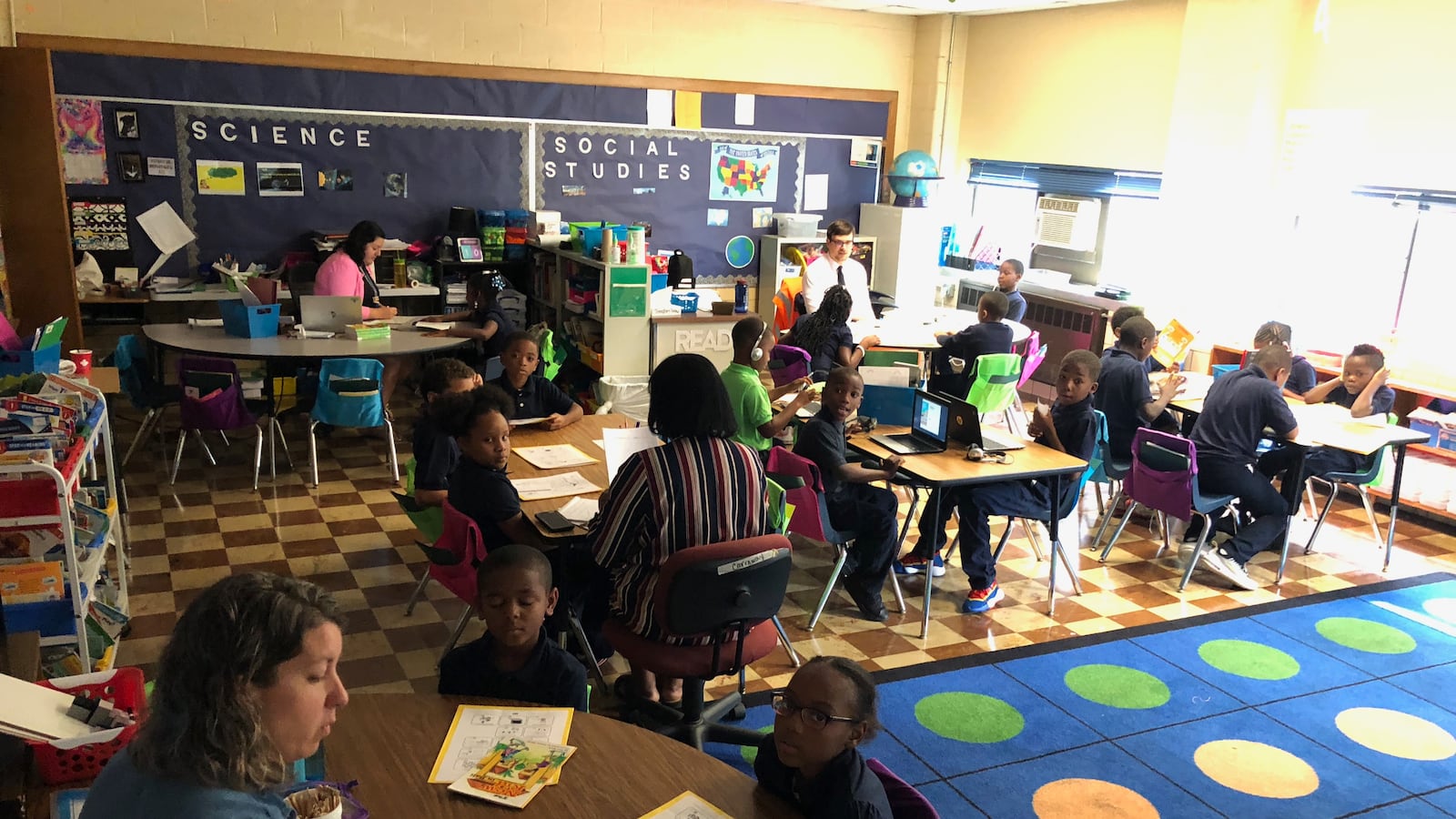States across the country are taking steps to address dyslexia head on, betting that they can improve their literacy rates by tackling a reading disorder that affects roughly 1 in 5 students.
Michigan, not so much. Despite widespread concern over low reading scores — just 43% of students scored proficient in English last year — the state had no official policy on dyslexia.
That changed in December, when a single sentence mentioning dyslexia was quietly added to the state education budget.
But it’s far from clear whether the new policy will be enough to make a difference, given the limitations of the state’s special education system and a lack of training for teachers in effective approaches to teaching challenged readers like students with dyslexia.
Advocates are hoping that just mentioning dyslexia will provide a toehold to expand Michigan’s approach to a learning disorder whose impacts are felt in virtually every classroom. Children with dyslexia can learn to read sooner if they are exposed to appropriate instructional techniques.
“Michigan’s literacy crisis is well documented,” said Brian Gutman, director of external relations for Education Trust Midwest. “We know there are students sitting in classrooms across the state who are struggling to read because they have dyslexia, and in many cases they might not be aware, their teacher might not be aware. How can we expect them to be well served when we don’t understand their need?”
The new language added to the state budget requires that intermediate school districts use screening tests to identify potentially dyslexic students if the districts are already using a test capable of doing so.
Many are in fact using such a test. The state’s new third-grade reading law requires schools to choose from a state menu of tests to screen students for reading difficulties. Most of those tests can flag students for signs of dyslexia. (The tests can’t actually diagnose dyslexia; only a medical professional can do so.)
William Miller, director of the Michigan Association of Intermediate School Administrators, said that schools likely are already screening kids for dyslexia.
“If you’re giving assessments, why wouldn’t you use them?” he said. He added, “if someone has dyslexia, educators need to be aware of that.”
Gutman acknowledged that the new language is far from the comprehensive dyslexia policies that other states are adopting.
“Certainly in the future we need to make sure we see much more to make sure that students who have dyslexia are identified early, when it’s least expensive to address.”
Marcie Lipsitt, co-founder of the Michigan Alliance for Special Education, was skeptical.
“It will literally do nothing,” she said of the new language.
Roughly half of states require districts to identify students who might be dyslexic and inform teachers and parents. Others go further, requiring teachers to be trained specifically on working with dyslexic students.
But Lipsitt says that even a comprehensive system for identifying students with dyslexia wouldn’t make much difference given the limitations of Michigan’s teacher training and special education systems.
She said Michigan helps fewer students with reading disorders than do other states. Michigan’s special education system is underfunded by at least $700 million, according to a 2017 study commissioned by a former Republican lieutenant governor.
What’s more, teacher training programs in Michigan, like others across the country, aren’t doing enough to prepare educators to work with struggling readers, including dyslexic students. Only three out of 24 teacher prep programs statewide received an “A” rating for early literacy from the National Council on Teacher Quality, while eight were rated “F.”
Shannnon Shafer, a teacher in Pinckney Community Schools, trains other teachers in literacy instruction.
“The first thing they always say is, why didn’t I learn this in college?” Shafer said.
Safer says she would support a more comprehensive statewide dyslexia identification policy.
Amy Gulley, a dyslexia expert with the Institute for Multisensory Education who keeps tabs on state policies related to dyslexia, said just including the word “dyslexia” in Michigan law offers hope that the state will join what she called a national wave of reforms.
“It’s good that states are even talking about it,” she said. “Dyslexia is prevalent. These students are in our classrooms, and what are we going to do about it?”

